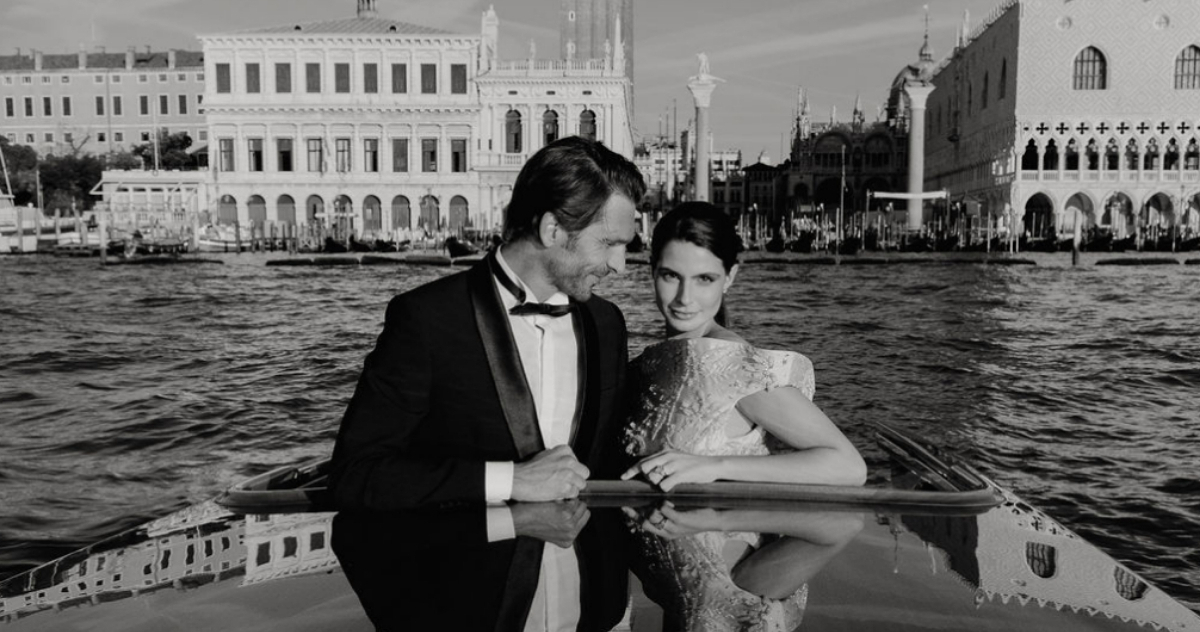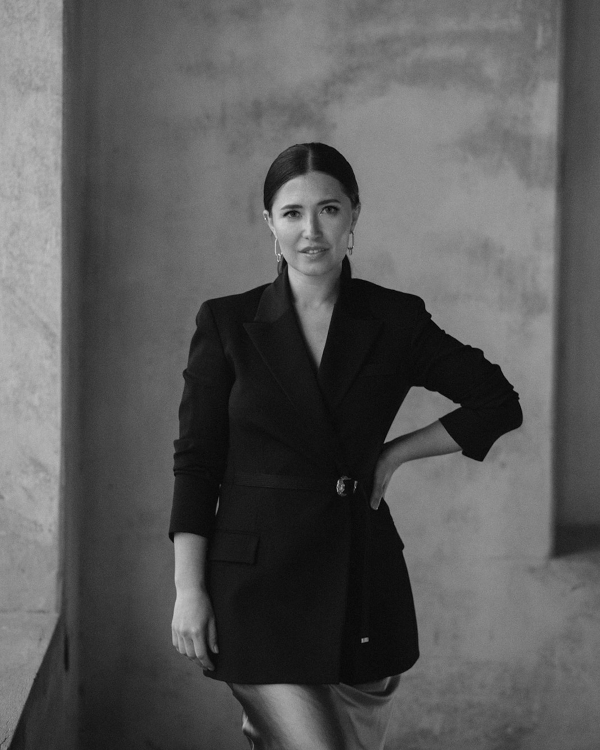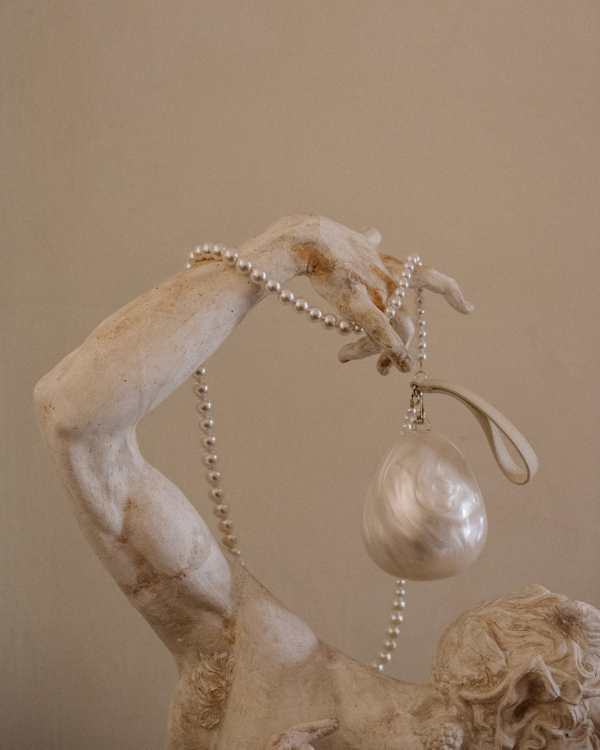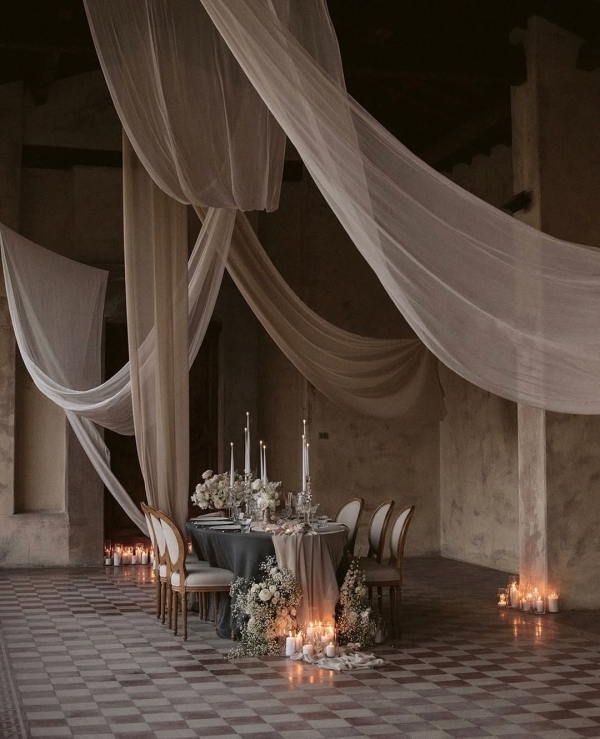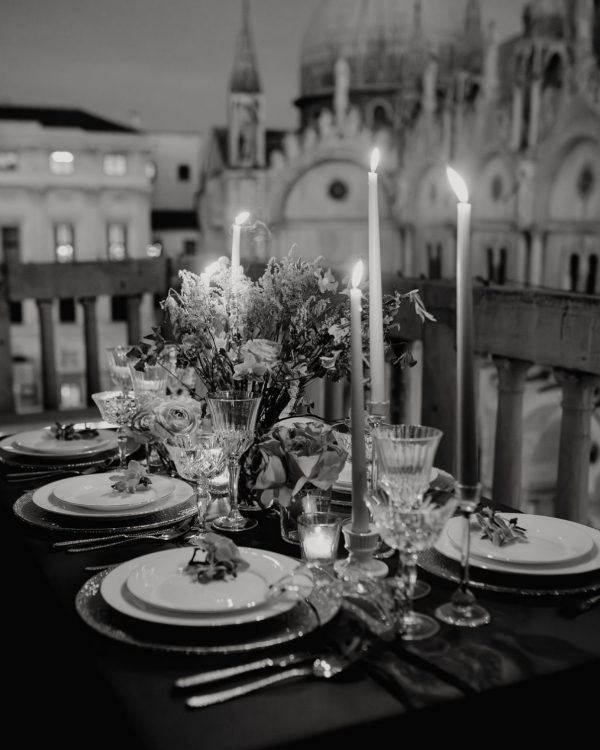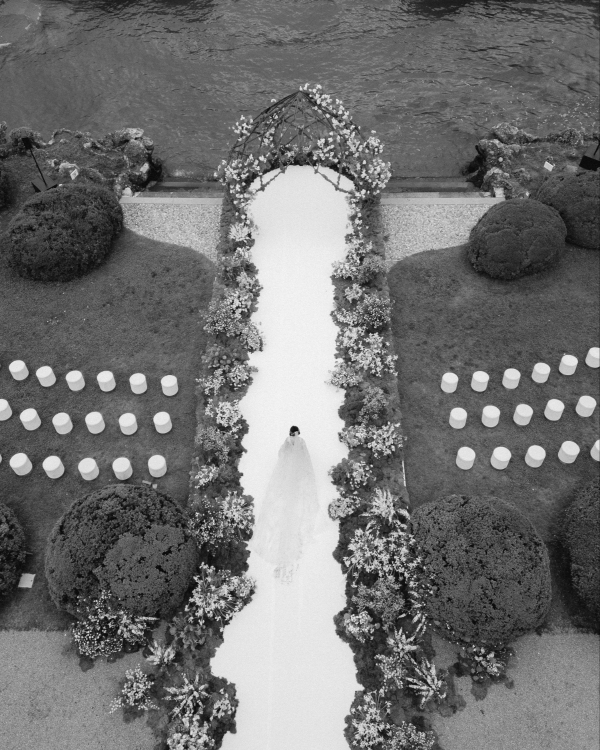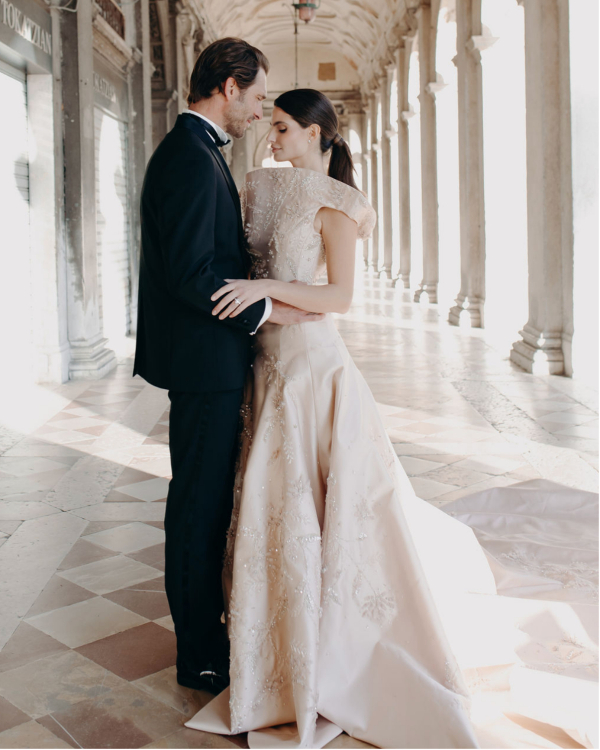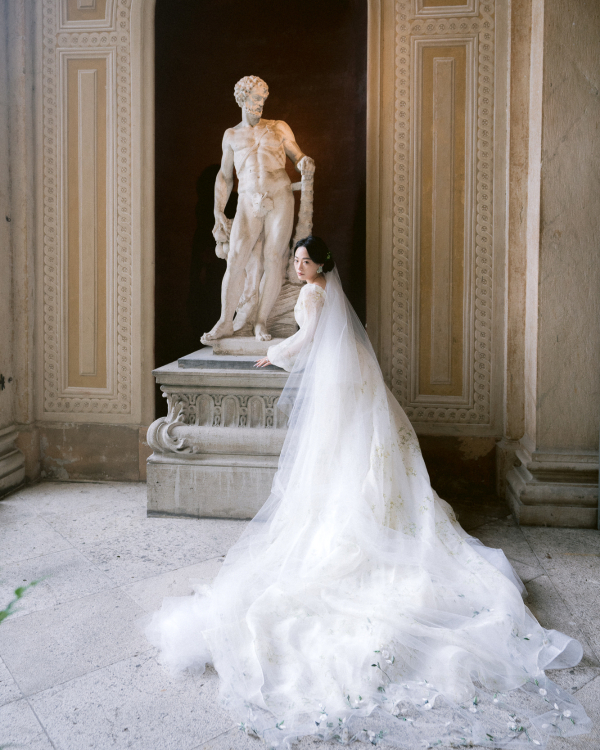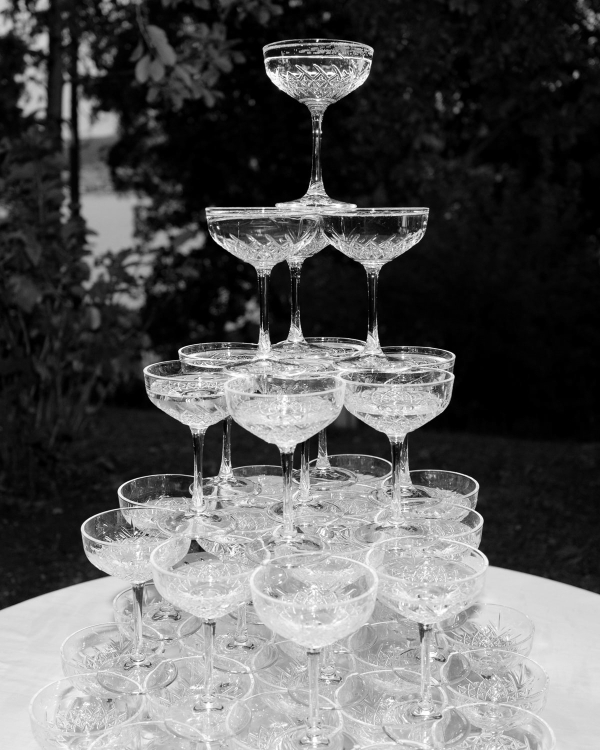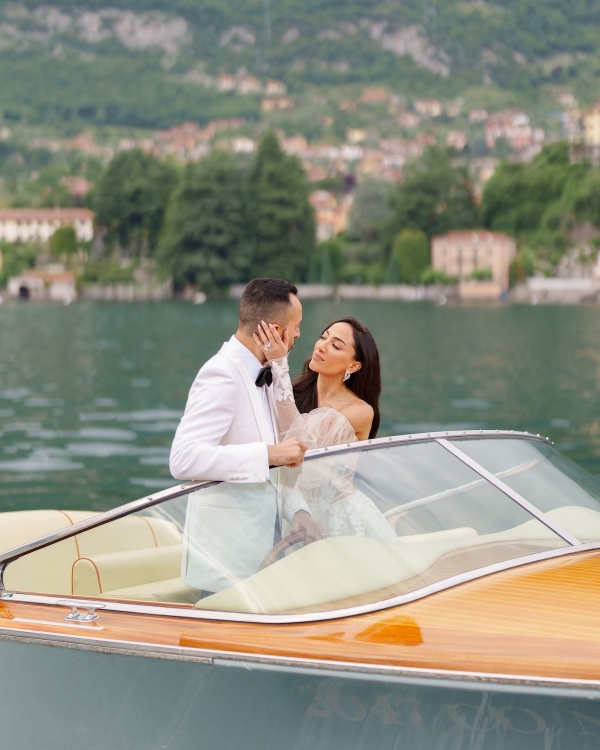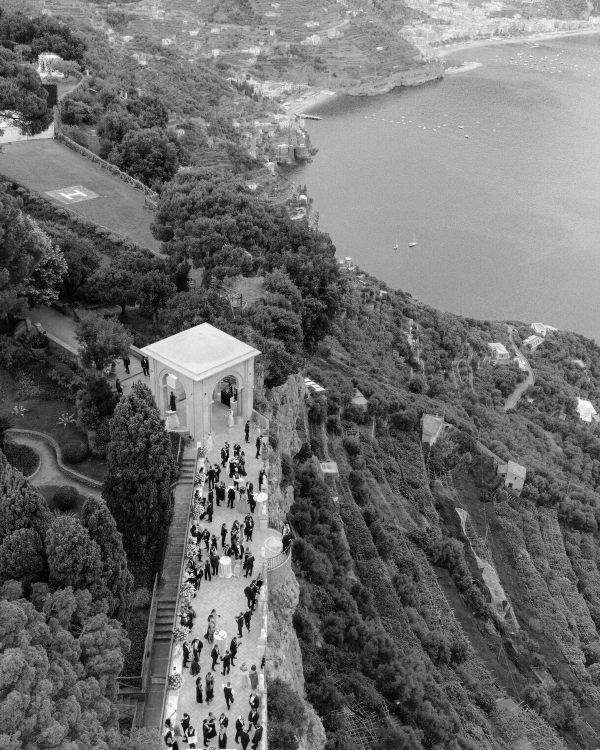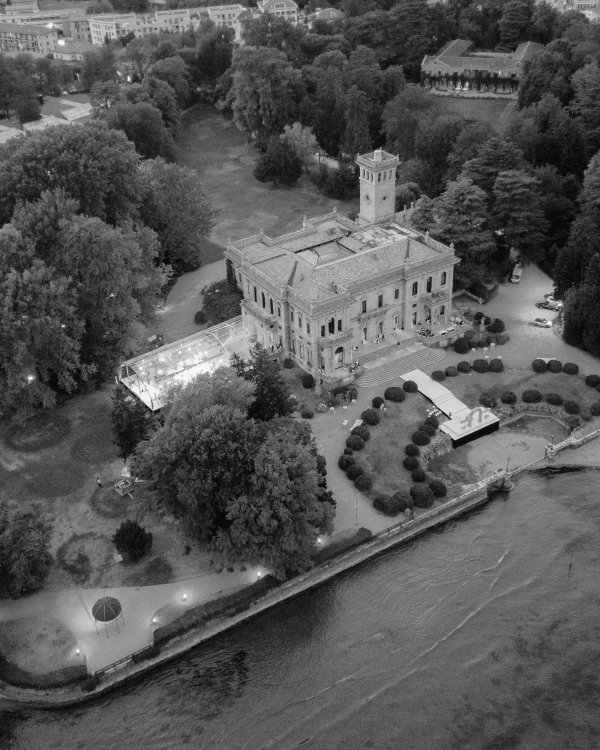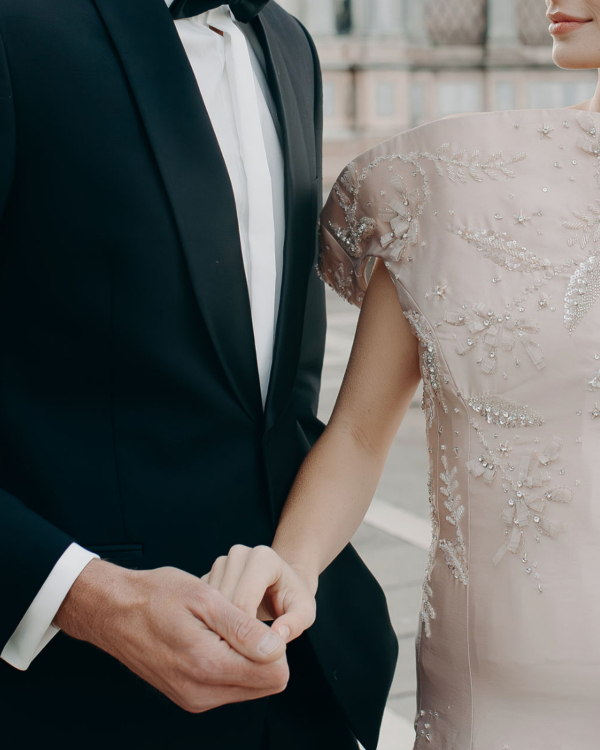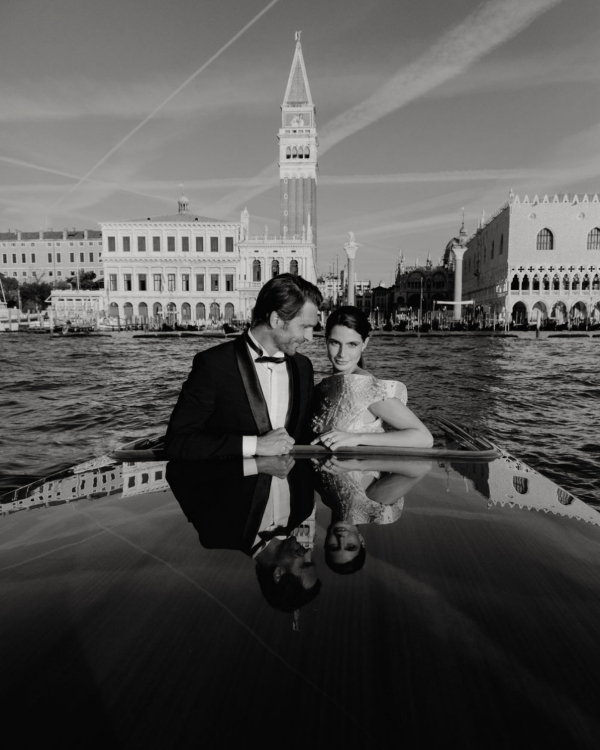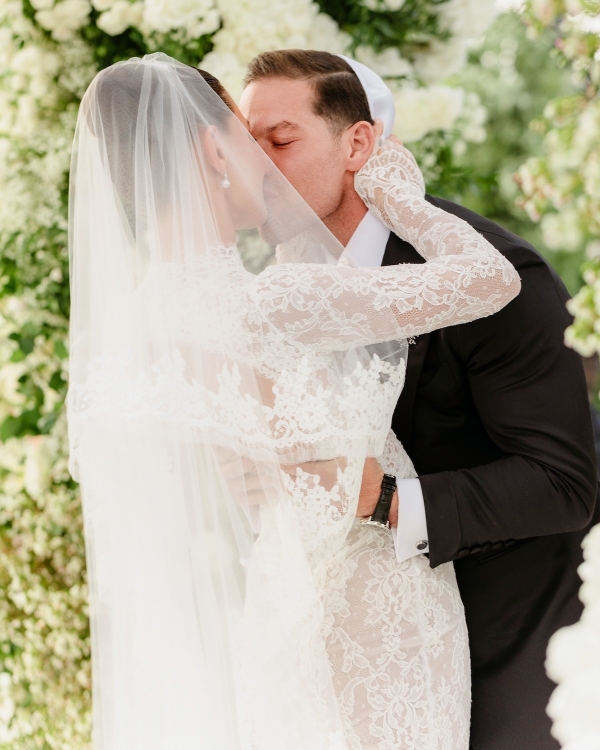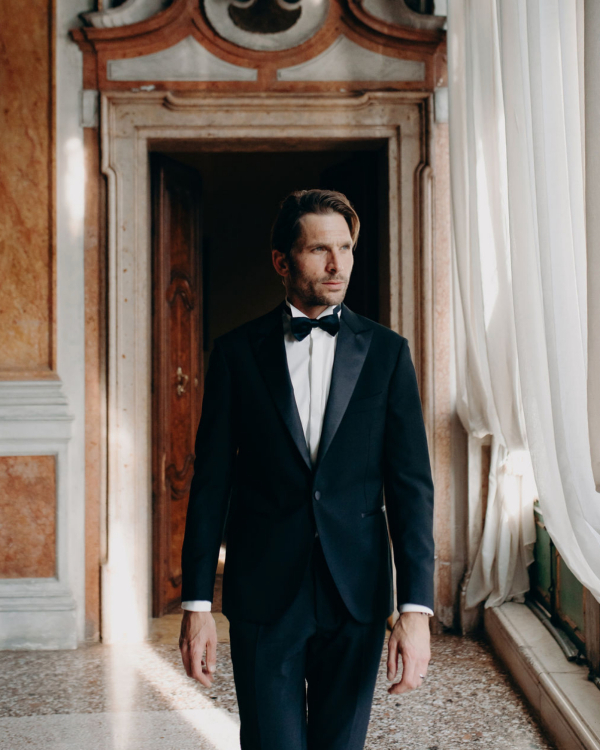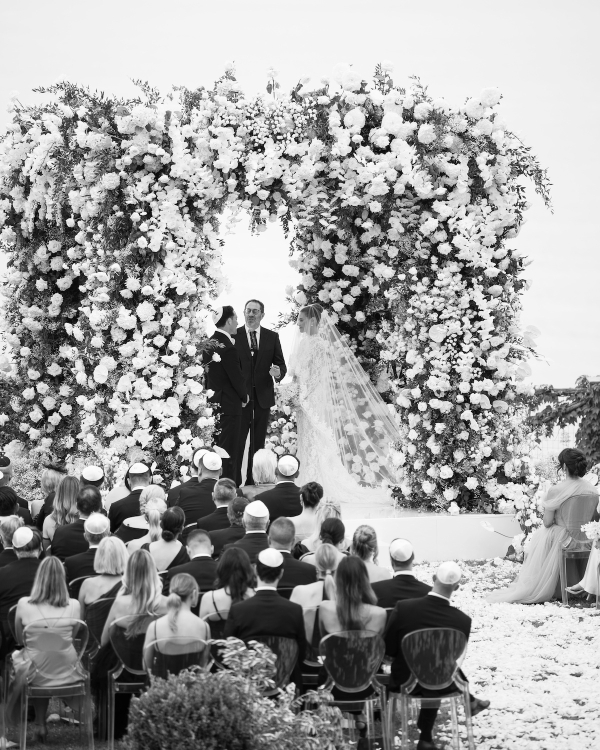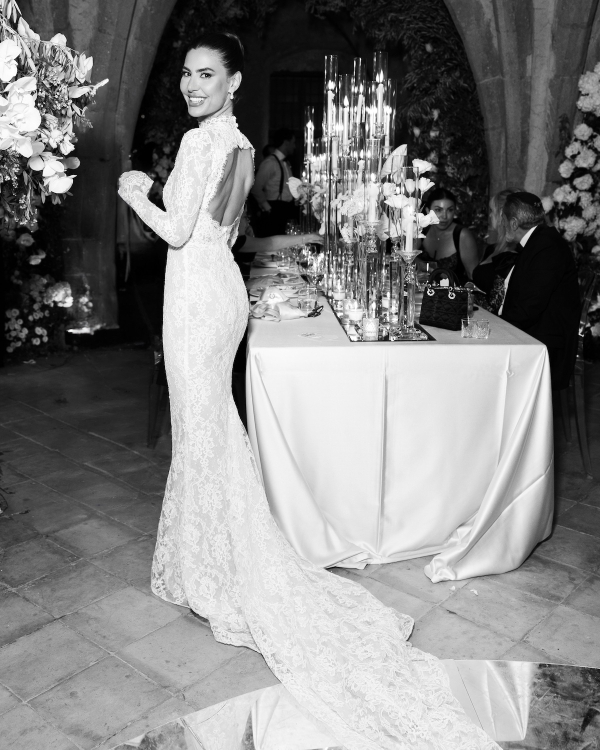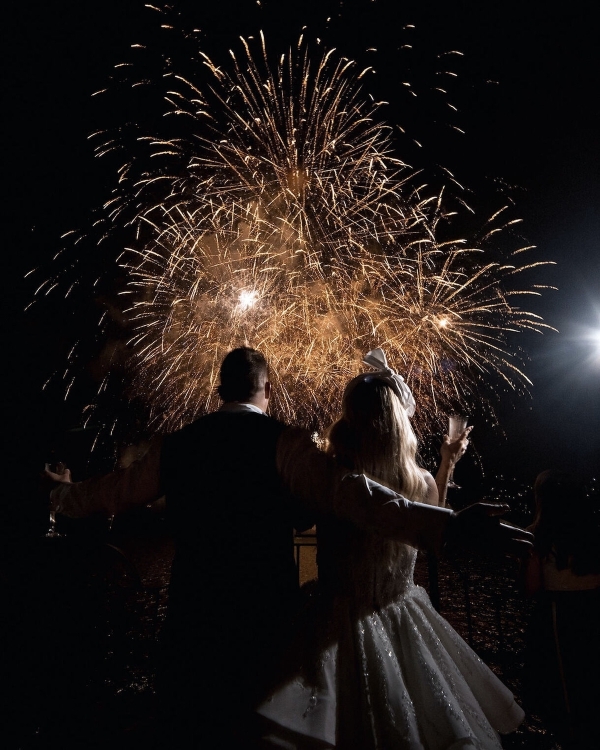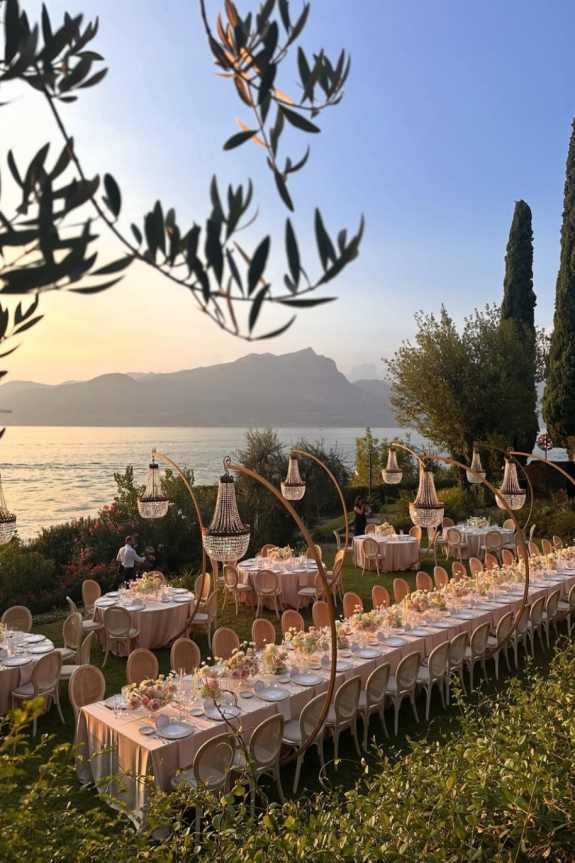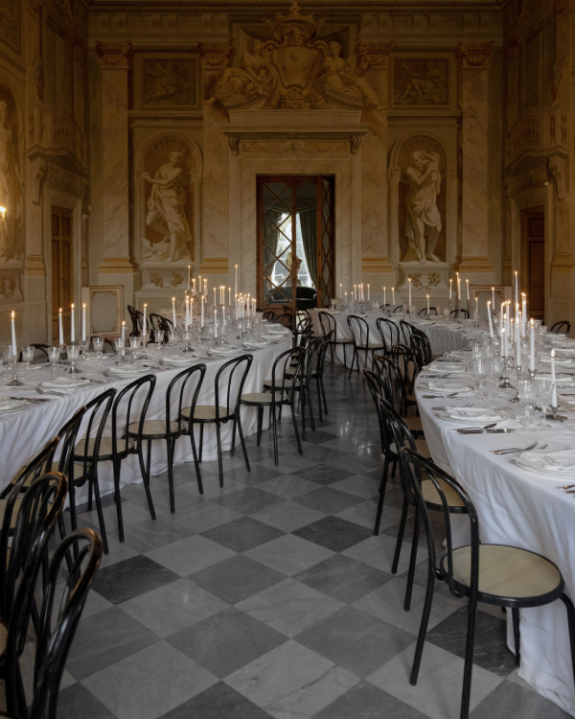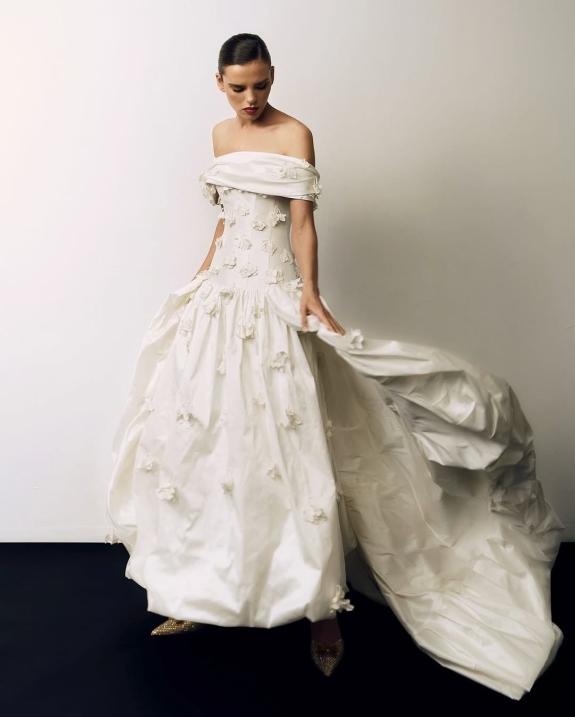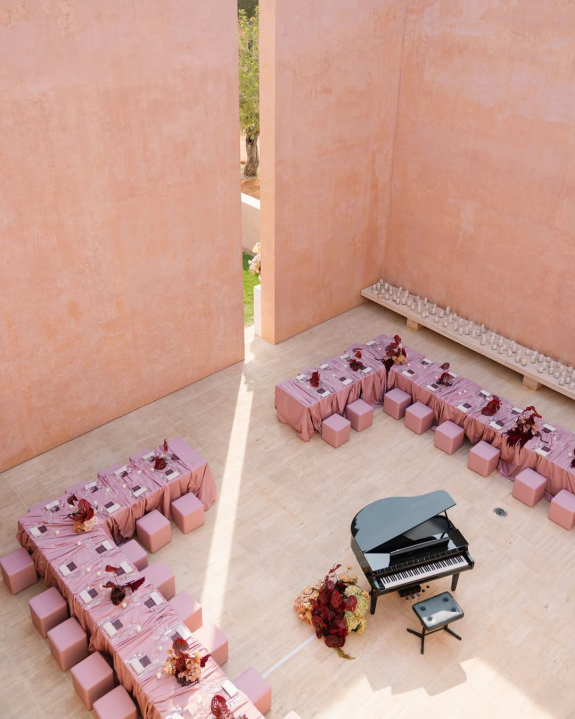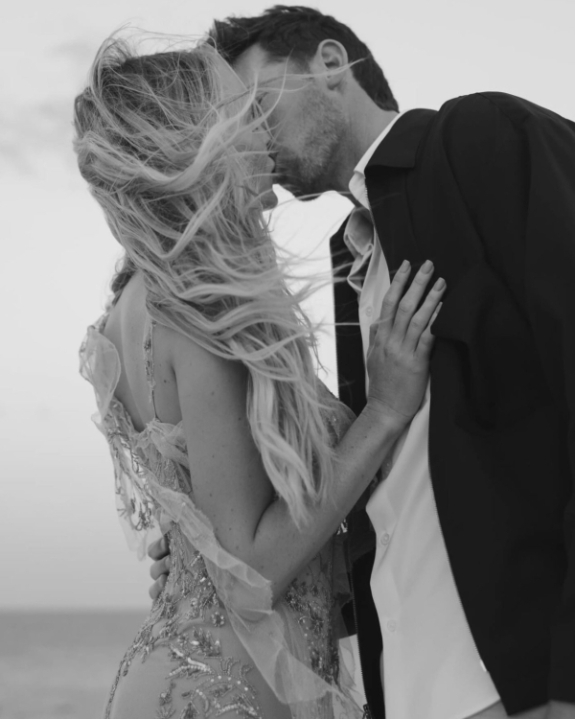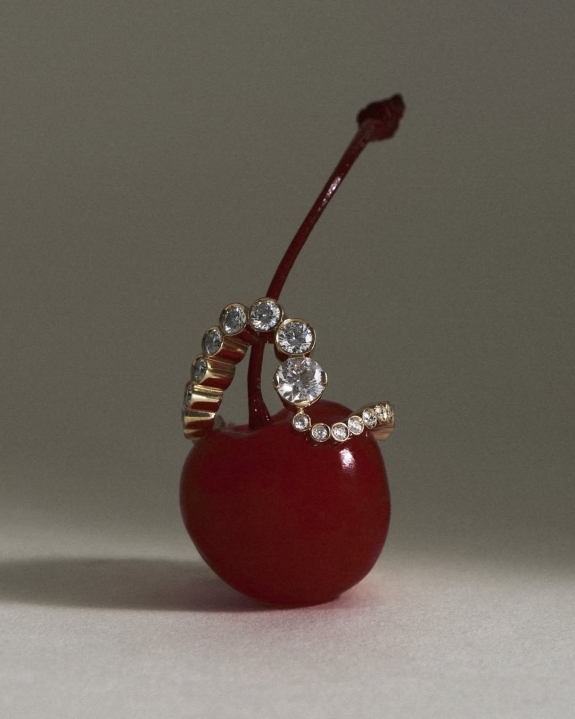Photography: Dos Mas En La Mesa
In the world of luxury weddings, where beauty is often loud and spectacle reigns supreme, Ksenia Ridolfi offers a quieter kind of mastery—one rooted in intuition, intentionality, and an artist’s eye for harmony. Based between Italy and France, Ksenia’s work is not just about planning—it’s about curating moments with emotional clarity and visual poetry. What began with a passion for flowers evolved into a career defined by layered aesthetics, logistical elegance, and immersive guest experiences. Her weddings unfold like narratives: each detail part of a greater composition, each celebration a dialogue between place, couple, and culture. In this interview, Ksenia shares her journey, her signature approach to styling destination weddings, and the behind-the-scenes insights that transform an event into an experience worth remembering.
Photography: Dos Mas en La Mesa, Elise Morgan
What inspired you to become a wedding planner and stylist? Where did it all begin?
It all began with flowers. I’ve always had a passion for creativity—mixing shades, exploring textures, and experimenting with unexpected combinations. At the time, I had no idea where this would lead me. It was the early days of the wedding industry, especially in Italy, where the concept of luxury destination weddings was still emerging. Back then, I didn’t even know the difference between a wedding planner and a wedding designer.
In the beginning, I worked as a florist, designing elegant floral arrangements. Soon, small planning requests followed. Over time, everything evolved organically. Today, my floral background provides a strong foundation for crafting refined, cohesive décor concepts—and for ensuring that every event reflects an authentic, artistic vision.
Photography: Audrey Paris Photo, Elise Morgan
How do you work with your clients? Walk us through the journey of a couple working with you...
It starts with an introductory call, usually about an hour long. I take this time to truly connect—to understand personalities, expectations, and whether there’s an intuitive alignment. I believe a wedding planner should see the world through the couple’s eyes, work with their hands, and love the wedding as much as they do.
Once we’re aligned, we move forward with a contract and a month-by-month planning structure, beginning with venue selection. Every phase is carefully curated, so the couple always knows what to expect. For me, the planning journey is just that—a journey. One that’s exciting, emotional, and deeply personal. By the final month before the wedding, most of the details are in place, allowing the couple to simply savor the moment and fully enjoy the experience.
Content: Kira Smirnova
You specialize in luxury weddings in two of the most romantic places on earth—what is it that continues to draw couples to France and Italy?
Italy is all about warmth—golden Tuscan hills, heartfelt hospitality, vibrant energy, especially in the South. There’s something effortlessly joyful about it. But Italy also holds layers of elegance—from the timeless allure of Venice to the glamour of Lake Como. France feels more refined, more poised. Especially on the French Riviera or in Paris, you sense that understated sophistication. Architecturally, French châteaux often have grander, more intricate façades compared to Italian villas, and the gardens are curated with meticulous precision. The cuisine is nuanced, layered—ideal for those who truly appreciate complexity. Both countries are iconic for a reason. They offer centuries of beauty, culture, and craftsmanship. We don’t chase trends—we seek the rare and meaningful, the settings that are authentic and unforgettable.
Photography: Le Secret D'Audrey, Bottega 53
What are some of the most memorable locations or venues in France and Italy you’ve planned weddings?
Italy and France are among the most beautiful and culturally rich countries in the world, offering an exceptional variety of truly unique locations. The choice is vast, of course, but the ones I would like to highlight are the following:
Italy
Villa Cimbrone in Ravello, Amalfi Coast – A UNESCO heritage site on the cliffs, with sweeping views of the Amalfi Coast. The famed Terrace of Infinity and classical busts set a dreamlike stage.
Aman in Venice – A 17th-century palazzo turned ultra-luxury hotel, with a private garden, original frescoes, chandeliers, and a view over the Grand Canal.
Villa Balbiano in Lake Como – An opulent 16th-century estate with curated interiors, lakeside gardens, and that iconic Instagram-worthy ceremony view.
Villa Erba in Lake Como – Majestic and cinematic, with regal halls, frescoed interiors, and a garden that can host up to 1,000 guests.
Villa Gamberaia in Florence – A Renaissance gem in the Tuscan hills, famous for its manicured gardens and sunset dinners overlooking Florence.
France
Private Yacht on the Seine, Paris – A 25th wedding anniversary celebrated aboard a luxury yacht, cruising past the Eiffel Tower, Notre-Dame, and the Louvre.
Villa Ephrussi de Rothschild in French Riviera – A Belle Époque pink fantasy with enchanting gardens and fountains—every girl’s Riviera dream.
Château de la Chèvre d’Or in Èze – Nestled in a medieval village, suspended between sky and sea, with one of the most breathtaking views of the Mediterranean.
Photography: Bottega 53, Danilo & Sharon
Today, a wedding is so much more than simply a ceremony and reception and often now, a multi-day immersive event. Tell us about how you curate an experience for both the couple and their guests that go beyond a traditional wedding day?
A destination wedding begins long before the wedding day itself. From the moment guests receive a beautifully crafted invitation or access the couple’s private website, the story begins—mood boards, curated dress codes, and thematic details set the tone. The itinerary is thoughtfully designed: seamless airport transfers, elegant welcome gifts, and three days of experiences, each with its own ambiance and aesthetic.
We aim to immerse guests in both the couple’s love story and the culture of the place. There’s a natural flow—an intimate welcome, a “wow” wedding day, and a relaxed farewell by the sea or in the vineyards. Even after the wedding, we remain involved—helping with logistics, ensuring nothing is forgotten. It’s a complete, cherished experience for everyone.
Content: Kira Smirnova
What are some unique cultural or regional traditions in France and Italy that couples often incorporate into their weddings?
Traditional religious ceremonies in historic churches—especially Catholic rites—bring a sense of European timelessness. Food and dining is also at the heart of each culture so there are a lot of traditional elements here that can be incorporated, such as aperitivo hour, Champagne towers, croquembouche, and gourmet multi-course style feasts on long wooden tables amongst olive groves. Additionally, playful touches keep things personal, for example a custom-blended local wine that's labeled with the wedding date and year, guests calling out “Bacio!” for a kiss, bomboniere gifts (classic Italian favors), or pizza-making and perfume workshops for an immersive guest experience.
Photography: Adovasio Photography Studio, Elise Morgan
Planning a luxury destination wedding can be confusing and complex for couples. In your experience, what are the most common issues that can arise, and how do you overcome these?
The wedding venue sets the whole tone. Too often, couples fall in love too quickly and book without checking if the true capacity, if the plan B option is both aesthetic and functional, if the event flow suits your style, and the tent set-up details and needs.
Secondly, many couples underestimate the budget, only accounting for the venue, food, and flowers. But weddings are like productions—there are often more vendors than guests! For example, private villas often need everything brought in such as staff, kitchen and tents which can significantly add to the budget. Additionally, couples often overlook potential plan B expenses including tents, décor and even extra venue rental days. Often there can also be hidden logistical costs for destiantion weddings such as generators, cleaning, local taxes, waste, staff meals and vendor logistics, as well as all the beautiful small details for your guest's comfort such as fans, slippers, heel protectors, bathroom kits.
Lastly, couples can often misjudge the timeline to plan a destination wedding. The ideal time is 12-18 months, however a minimum time of 6 months can be possible. Just keep in mind short timelines mean limited availability and high stress, and don’t forget visas for your international guests and vendors.
The solution to all of this? Begin early, take venue selection seriously and work with a planner to reduce stress from day one!
Photography: Elise Morgan, Danilo & Sharon
How would you describe your style, and how do you fuse that with each or your client’s own personal styles?
My style blends balance, symmetry, and classical beauty with the couple’s unique spirit. I call it Eternal Beauty. At the same time, lately I’ve truly fallen in love with color—maybe it’s all thanks to my trip to India.
Photography: Elise Morgan, Danilo& Sharon
What advice would you give to couples dreaming of a wedding in France or Italy but unsure where to begin?
Hire a wedding planner and start planning at least 6 months, ideally 12–18 months in advance. But most of all—love each other, trust the process. Love is what brings the most extraordinary projects to life.
Photography: Danilo & Sharon, Andrew Bayda
